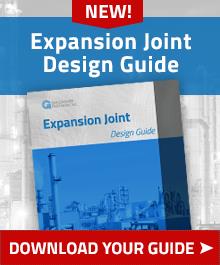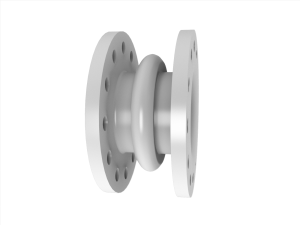
What is an Expansion Joint?

- Absorb movement
- Relieve system strain due to thermal change
- Reduce mechanical noise
- Compensate for misalignment
- Eliminate electrolysis between dissimilar metals (metal expansion joints)
They are built to expand, contract, and adjust without straining or breaking the piping or ducting on either side. Essentially, an expansion joint is meant to protect the piping system from damage.
Elastomeric Expansion Joints
Nonmetallic expansion joints and flexible couplings are ideally suited for hundreds of applications in a wide range of industries, including:
- Power generating stations
- Pulp and paper
- Chemical and industrial process piping
- Waste water and sewage disposal
- Marine applications
- Heating, ventilating and air conditioning
Joint Selection
To select the proper expansion joint, consider:
-

- Pumped medium: type of liquid, gas, or vapor in system
- Temperature range
- Pressure/vacuum range
- Movements needed
- Environment: degree of exposure to:
- Weathering
- Oil
- Sunlight
- Open flame
- Liquids
- Chemicals
- Gases
- Other
- Vapors
- Installed face-to-face dimensions
- Degree of pipe misalignment
- Drilling: if other than standard 125 Ib. ANSI, determine:
- Flange O.D.
- Bolt circle
- Number of bolt holes
- Diameter of hole
- Need for retaining rings
- Need for control units
- Recommended for use with most expansion joints
- Must be used in cases of insufficient pipe support
- Need for special construction
To read more about elastomeric expansion joints, metal expansion joints, or flue duct expansion joints, download your guide today. If you have specific questions, please feel free to contact the Gallagher Engineering Department.
